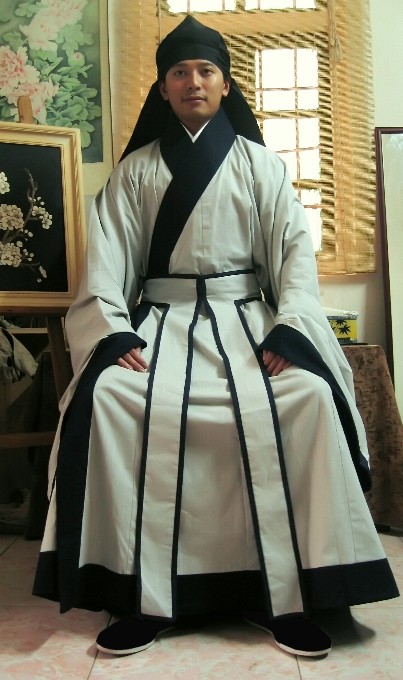Although Hanfu becomes more readily available in a maturing market, a newcomer may still be driven to a daze by the flood of new terms and jargons used to describe and explicate the types and elements of this diverse sartorial culture.
It does not help to the situation when there is an ever-changing understanding of the archaeology and taxonomy of the clothing within the civilian and institutional academic Hanfu researchers, as well the liberties taken by some Hanfu makers in its design and market labelling. Just what is the difference between a Zhishen and a Zhiduo? Why is a Shenyi of a totally different price and prescribed occasion for wearing compared to a round-collared robe or a simple long straight robe? Why is the Xuanduan so exclusive, if it even refers to the same thing to different people?
Let us take a brief look at some of the finer details these clothes’ definitions:
- The Xuanduan (Black-hem) 玄端 Outfit,
- the Zhiju Shenyi (Straight-hem deep-robe) 直裾深衣,
- the Zhiduo (straight robe) 直裰,
- the Zhishen (straight-body robe) 直身,
- and the Daopao (Daoist robe) 道袍.







Recent Comments